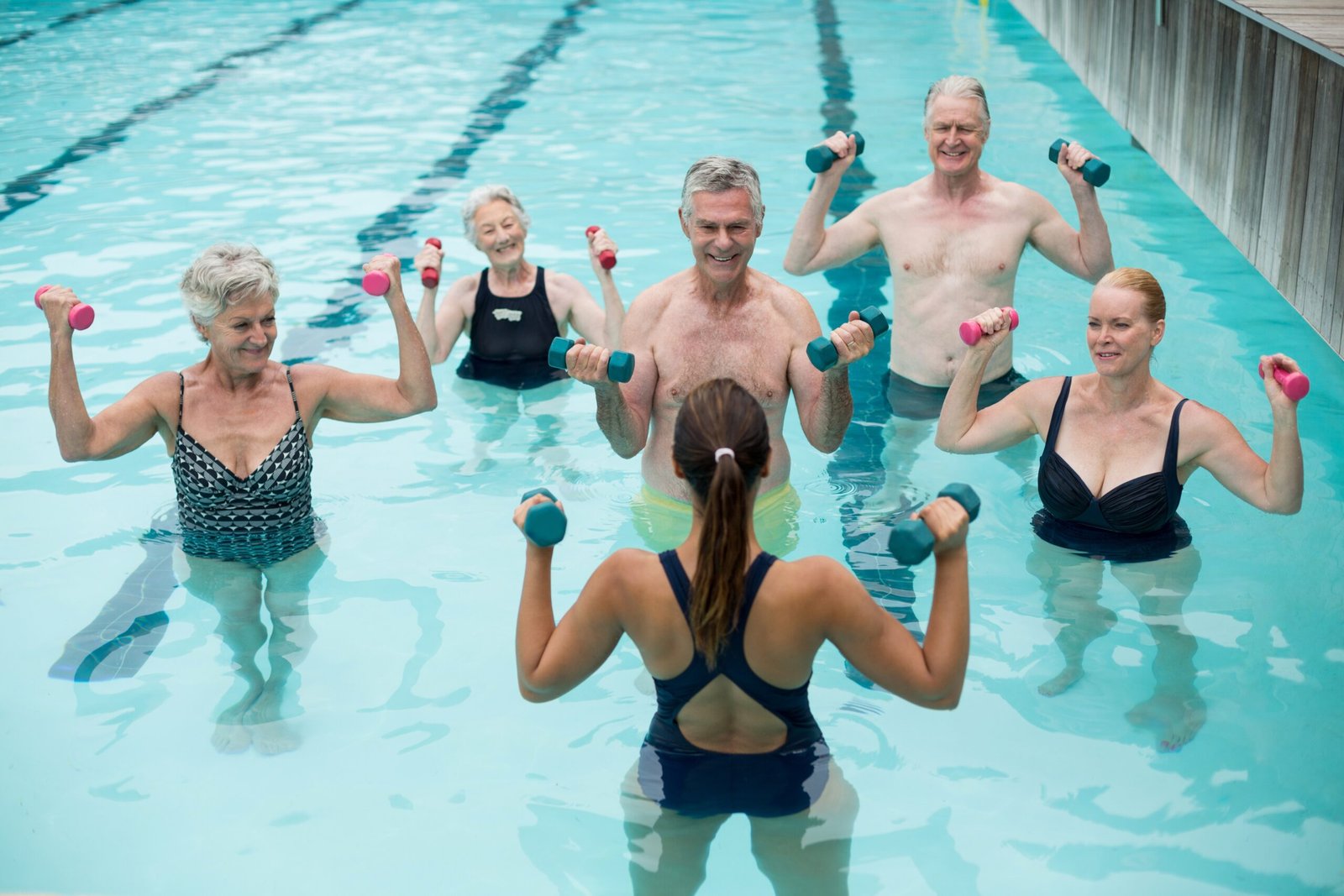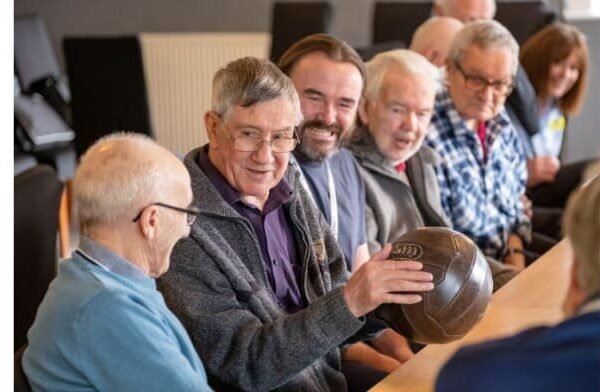COMMENT
By MARTYN ALLISON (UK adviser on sport, leisure and culture)
It was a pleasure and a relief to see Sport England publish the report on the future of public sector leisure (full report below), because it is a good report at the right time, and a relief because I know how long it has taken to get it published.
Let’s assess why I think it is so good. Firstly, it sets out our problems across the UK clearly and succinctly – the impact of Covid, the energy crisis and the cost of living crisis; ageing stock struggling with high energy costs and climate change requirements; finite resources nationally and locally to fix the problems; and a fragmented and fragile provider market.
Secondly, it makes a clear and concise case for ‘public leisure’, it makes a measurable financial contribution in terms of social value; they are important to communities and they contribute to health improvement, prevention and addressing health inequalities.
 Thirdly, and more importantly, the report represents a consensus across the sector that things now have to change, the status quo is no longer an option. To me it is a clear statement that the future must begin with an acceptance that we in the sector need to change how we work before we can legitimately demand others to support us with funding. There is in this report more honesty and humility than I have seen so far but the test is now how far the sector can deliver the changes required.
Thirdly, and more importantly, the report represents a consensus across the sector that things now have to change, the status quo is no longer an option. To me it is a clear statement that the future must begin with an acceptance that we in the sector need to change how we work before we can legitimately demand others to support us with funding. There is in this report more honesty and humility than I have seen so far but the test is now how far the sector can deliver the changes required.
This change is encapsulated in one key phrase ‘we will transition (pivot) from a traditional leisure service to an active wellbeing service’. In some ways I’m still not yet sure what we actually mean by this phrase as, for me, the sector has always been about the wellbeing of our communities. Search the early literature of the CCPR, then the Sports Council before Sport England (Scotland, Wales and Northern Ireland) and you will see it was always about being ‘healthy in body and mind’. Sportscotland also seek to capture that in their latest strategic plan, ‘Sport for Life’.
Commercialisation
Councils invested in new sport and recreation centres because of the good they did for their residents. It was only when we were pushed towards greater commercialisation under CCT and public finances started to tighten, and so greater justification was needed for the investment in facilities, that we perhaps pivoted away from some of these core values and principles. Yet, even under Best Value we had started to pivot towards health policy and the health benefits of participation. But it was austerity and the massive reductions in council funding that created the real shift as we increased our focus on efficiency at the expense of effectiveness. Facility contracts were allowed to became cash cows for councils at the expense of their social value which became lost only returning briefly in the pandemic when the importance of being active and supporting communities mattered once again.
So the message here is not just for the sector but for councils. Only together can this pivot happen because without a new consensus on what these services are about this change and new investment will not happen. Although, as the report says, there is a consensus in the sector that “competition for contracts needs to focus on outcomes rather than costs to create a sustainable model that achieves the sector’s full potential to deliver economic and social value to the local economy”, I’m not sure this consensus currently exists across the majority of councils.
So, the real challenge is one of influencing and building that new consensus with councils by adapting our own focus and behaviour. We have to build better relationships with councils and their communities and show they can trust us to deliver on their priorities. But we also need to convince them that this can only be done through very different contractual and partnership arrangements plus some new investment and for the externalised operators many part of large national companies building better local relationships will be an additional challenge. They are now increasingly viewed as just contractors not real partners. That’s the real challenge of this report and it could I think have been made clearer in the introduction from Tim Hollingsworth, Sport England CEO.
 In order to do this the report sets out some key parameters for changing not just what we do but how we work, mirroring many of the messages in Uniting the Movement. The foundations of this are correctly defined as aligning better with local health policy and priorities, locally designing and planning services based on places, developing our collaborative leadership capacity and engaging with the challenges of climate change and low carbon emissions. These four foundations take us to the heart of where councils now find themselves so we will now be on common ground with councils.
In order to do this the report sets out some key parameters for changing not just what we do but how we work, mirroring many of the messages in Uniting the Movement. The foundations of this are correctly defined as aligning better with local health policy and priorities, locally designing and planning services based on places, developing our collaborative leadership capacity and engaging with the challenges of climate change and low carbon emissions. These four foundations take us to the heart of where councils now find themselves so we will now be on common ground with councils.
These foundations are then reflected in the seven themes of change required within the sector, improving the quality of our data and insight, digital transformation, better coordination and partnership working (I would say collaboration), improving the leadership skills of the workforce and creating a workforce more diverse and more empathetic to what we are trying to achieve enabling us not to just champion equality and diversity but to actually make it a reality, build local trusting relationships with health and other partners and help deliver environmental sustainability. These are immense challenges for a sector now struggling and yet there are already many great examples of good practice where these changes are happening. It’s not about starting afresh it’s about how we transfer this existing learning and best practice at scale to everywhere.
Who will lead the necessary collaboration?
The list of actions at the end are welcome in bringing together all the partners but there is no indication of how the implementation will be co-ordinated and managed, and how some of the previous silo working will now be avoided. Perhaps this will come next. Also it is not clear enough who will actually lead on building this consensus with individual councils – will this be the LGA, Sport England or will each local situation emerge from existing relationships good and bad? To date, we have seen some councils talk about closing facilities permanently or temporarily, bringing them back in house for direct management or looking for more radical restructuring of whole services. It is important that the good or best practice is shared directly with the political leadership of councils before permanent decisions are made. Who will be responsible for doing this? Who can get close enough to the political leadership to influence and shape policy?
If I have one disappointment with the document it is that facilities have been looked at in isolation from the rest of the sport and physical activity system. Whilst facilities are facing their crisis they are not alone. Sports clubs, community organisations and private gyms are also facing similar pressures and collectively with public facilities could provide a universal service across places. I would have like to see a recognition of this wider system and how by greater collaboration the health and wellbeing challenges of places could be addressed together. Facilities have been the traditional home of some sport. Swimming is perhaps the stand out relationship but sports halls and playing fields are equally important. In the pandemic we saw many examples of sports halls taken over by gym equipment to maintain income streams much to the annoyance of sport clubs and currently rising prices are having the same impact, yet the report is silent on these important arrangements going forward.
Some of the more creative solutions to public leisure I have seen emerge do look strategically at the place and examine how all the elements in the system can play their part. Facilities may not always be the solution to supporting some individuals and communities, and trying to retain all of them must not prevent councils looking for a range of diverse solutions for their different communities. I hope this bigger picture has not just been overlooked and will be revisited as Sport England start to roll out more support for place based working. This challenge must not be seen as just a campaign to protect facilities but part of a journey of system change that addresses the social and economic challenges of our communities.
So well done everyone involved in getting this report published. It is a huge leap forward in terms of recognising that change has to now happen and happen fast. But over the last few years we have seen many similar reports on the future of our sector after which nothing has changed; if anything, things have got worse. I have said from the start of the pandemic that the future of the sector is all about the quality of its leadership, not the hierarchical leadership sitting at the top of the bodies whose logos are displayed in the report, but the leadership of every single person working in the sector. Thousands of words have now been written about our future, but now we need to see some action.
Others will be watching, and, in Scotland, it will be fascinating to see the role that Sportscotland play, and how they provide a lead in the same space and with similar challenges, with a new chief executive about to be confirmed.
Martyn Allison.
December, 2022
Sport England Future of public sector leisure Dec 22





Thought Piece from Charlie Raeburn for Reform Scotland